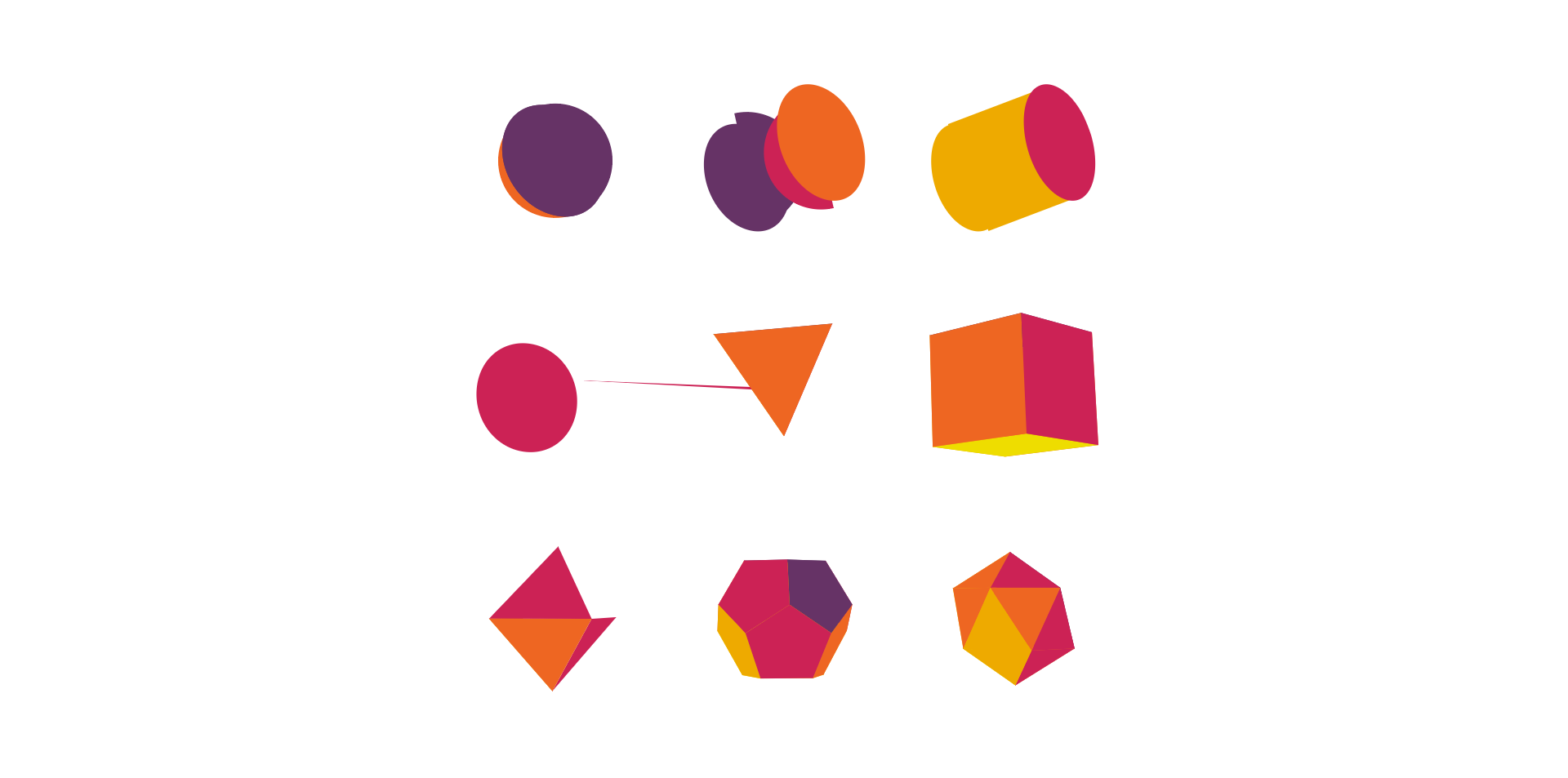Comments (7)
So, I've just tried out doing this the super naive way:
let fov = -150;
function scale(z) {return fov/(fov+z)};And then on each wrapper function for canvas rendering I added:
CanvasRenderer.line = function( ctx, elem, point ) {
let s = scale(point.z);
ctx.lineTo( point.x * s, point.y * s);
};Obviously this can't handle tapering of strokes, setting the fov in the factory / as a property or have the user set custom clipping planes...
Besides that this does work pretty well and I can't really see any weird distortions or wobbles on beziers.
It does however break the cone shape completely (for some reason it even animates itself), produces slight wobbling on Polygons (aka the Z-Dog-Charme) and it pretty much renders every single occlusion hack useless.


Still I'd be super glad if you've decided to implement this properly and ship it in the next version of Z-Dog ✌
from zdog.
FWIW My approach would be to add a simple scale multiply on render points given the z-distance from the origin. Definitely not mathematically accurate, but it could cover 80% of use cases in like 4 lines of code. Zdog is not trying to be the ultimate 3D engine, more like a lightweight 3D illustration tool.
from zdog.
The tricky thing about perspective is that the representation here is cubic Bézier segments. These are affine-invariant, which means that to apply any arbitrary affine transformation we can transform just the control points and the transformation of any arbitrary point on the curve will be correct. That is, if we call our affine transformation A, and our Bézier curve with control points [a, b, c, d] a parametric function f_[a, b, c, d] (t), we have
A(f_[a, b, c, d] (t)) = f_[A(a), A(b), A(c), A(d)] (t)
for every parameter value t. But perspective transformations are not in general affine.
Therefore, to apply a perspective transformation we need to do more work: in general there is no exact Bézier-curve (or multi-segment Bézier spline) representation of a perspective-transformed Bézier curve, so it is necessary to approximate the perspective-transformed curve by multiple Bézier segments to within some desired level of tolerance.
To implement this feature therefore requires (1) an algorithm for determining the control points of the best (or at least some) approximation of a perspective-transformed segment by a single Bézier segment, possibly under some reparametrization, (2) some kind of error metric defining the difference between two curves, (3) some scheme for subdividing the original curve, optionally optimizing the split points to reduce the number of required curves.
It turns out to be just about as easy (or hard) to support applying arbitrary transformation functions as it is to just support perspective transforms.
Let me recommend as one pretty performant method, https://observablehq.com/@jrus/bezplot
@desandro if you want help with this feature shoot me an email or something.
from zdog.
Took a look to the doc and If I’m not wrong there is no shadow and light parameter.. It could add a nice depth to the shapes especially if they are moving. Maybe a suggestion to explore :)
from zdog.
It's a relatively low-complexity addition
Is it though? How would you draw a simple circle, rotated on any 3D axis? With orthographic, rotated circles are just ellipses. With perspective, you either need a polygon conversion or some way to compute a spline to fit it. ·(I’d be curious to follow the spline math if that’s what you’re thinking)
from zdog.
It's a relatively low-complexity addition
Is it though? How would you draw a simple circle, rotated on any 3D axis? With orthographic, rotated circles are just ellipses. With perspective, you either need a polygon conversion or some way to compute a spline to fit it. ·(I’d be curious to follow the spline math if that’s what you’re thinking)
Many perspective transformations of circles are ellipses. Of course, if you go far enough you get hyperbolas instead, and then need to approximate those with cubic polynomial segments.
from zdog.
Yes, this. It'd be great to have shapes change perspective in relationship to where they are on a webpage as you scroll down.
from zdog.
Related Issues (20)
- Migrate codebase to ES8/TypeScript? HOT 8
- Element overlay late HOT 1
- Would wasm make it any faster? HOT 3
- 3D shape properties are not updated HOT 3
- Line across inside cylinder when fill is false HOT 2
- scene = new Zdog.Anchor() - Memory Leak? HOT 1
- why do shapes vanish when on a box HOT 1
- how animate a shape with a path HOT 1
- using for-loop and variables in path command HOT 1
- camera move(feature request) HOT 2
- Stroke Dasharray [feature request]
- Better documentation of normalizeRotate()
- Library
- how to import module of Zdog?
- Documentation website seems to be down
- Hollow Cone doesn't render in all rotations
- add light source
- [feature request] SVG lighting
- smoke effects cause model flickering HOT 3
- AddTo can't change after creation of Zdog element HOT 4
Recommend Projects
-
 React
React
A declarative, efficient, and flexible JavaScript library for building user interfaces.
-
Vue.js
🖖 Vue.js is a progressive, incrementally-adoptable JavaScript framework for building UI on the web.
-
 Typescript
Typescript
TypeScript is a superset of JavaScript that compiles to clean JavaScript output.
-
TensorFlow
An Open Source Machine Learning Framework for Everyone
-
Django
The Web framework for perfectionists with deadlines.
-
Laravel
A PHP framework for web artisans
-
D3
Bring data to life with SVG, Canvas and HTML. 📊📈🎉
-
Recommend Topics
-
javascript
JavaScript (JS) is a lightweight interpreted programming language with first-class functions.
-
web
Some thing interesting about web. New door for the world.
-
server
A server is a program made to process requests and deliver data to clients.
-
Machine learning
Machine learning is a way of modeling and interpreting data that allows a piece of software to respond intelligently.
-
Visualization
Some thing interesting about visualization, use data art
-
Game
Some thing interesting about game, make everyone happy.
Recommend Org
-
Facebook
We are working to build community through open source technology. NB: members must have two-factor auth.
-
Microsoft
Open source projects and samples from Microsoft.
-
Google
Google ❤️ Open Source for everyone.
-
Alibaba
Alibaba Open Source for everyone
-
D3
Data-Driven Documents codes.
-
Tencent
China tencent open source team.




from zdog.